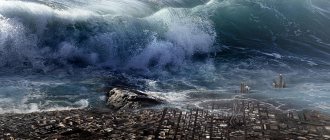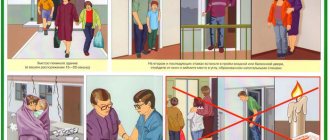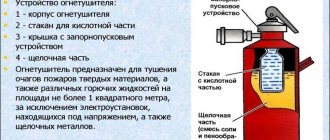Galveston
At the turn of the century, in September 1900, the American city of Galveston was hit by a major hurricane, killing 6 thousand people.
It was assigned a hazard category of 4, and strong gusts of wind damaged and almost destroyed 3,600 buildings. The damage was estimated at $20 million, at the current exchange rate of the early twentieth century.
More than 100 years have passed, and memories of one of the strongest hurricanes in US history still haunt the mind with the consequences of destruction.
9
Hurricane Katrina (2005)
Hurricane Katrina was the most destructive in US history and also one of the 5 deadliest ever recorded. By the way, it is the weather records in 2020 that are breaking the records of 2005. So far - by the number of “named” storms since the beginning of the season.
Hurricane Katrina began forming on August 23, 2005 in the Bahamas. Before the hurricane reached the US coast, it was classified as a level 5 hurricane on the Saffir-Simpson hurricane scale. The wind speed during the hurricane reached 280 km/h. A few hours before hitting the coast, the hurricane weakened to Category 4.
Evacuation was announced in the state of Louisiana and New Orleans, but most residents, due to lack of funds, simply could not leave the city and chose to take refuge in the Superdome stadium (where about 30 thousand people gathered). Later, murders, robberies and rapes began there.
New Orleans lies below sea level, the levees protecting the city were broken, more than 80% of the territory of New Orleans was flooded with water. Damage amounted to $80 billion, the hurricane claimed 1,836 lives, and 705 are still missing. About half a million more were left homeless.
The flooded areas of the city remained under water for about two weeks. The crime rate increased, looters robbed houses and shops, and shelled hospitals. At this time, President George W. Bush's rating dropped to 38%.
Camilla
The birth of a cyclone was noticed on August 5, 1969, off the coast of Africa, and on the night of August 17, a powerful natural disaster had already struck the coastal territories of the United States and Mexico.
“Camille” was assigned danger level 5, since the speed of the vortex flows when approaching US territory reached 180 kilometers per hour. The hurricane brought great destruction to the mouth of the Mississippi, 256 people are considered missing.
The powerful hurricane was followed by flooding that killed 113 Virginians.
Hurricane Camille (1969)
The tropical storm began on August 14, 1969, quickly gained strength to the level of the third category, passed along the eastern coast of Cuba and, having increased to the fifth category, entered the Gulf of Mexico, causing enormous destruction in its coastal territories and destroying almost all infrastructure at the mouth Mississippi River. The wind speed reached 310 km/h, the waves rose seven meters.
The real power of the hurricane still remains a mystery: during its passage through the states of Alabama and Mississippi, not a single meteorological instrument survived.
Camille caused landslides, widespread flooding and killed 259 people in Alabama, Mississippi, Louisiana and Virginia. Downpours in Virginia caused the worst flooding in state history. At least 8,931 people were injured. 120 bridges collapsed and thousands of houses were destroyed. Property damage from Hurricane Camille was estimated at $6 billion.
Typhoon Nika
In the southeastern region of the planet, typhoons are a frequent occurrence, but Typhoon Nika, which hit China in 1975, became the most powerful and destructive.
The force of the wind was so powerful that the large Banquiao dam broke, as well as dozens of smaller dams. This led to severe flooding.
During the rampant disaster in China, according to various estimates, from 100 to 230 thousand people died.
7
Andrew
Originating in the Atlantic Ocean, "Andrew" gained strength and swept through the Bahamas, southern Florida and affected Louisiana.
Residents were warned in time, but the hurricane became one of the most destructive. Despite the successful evacuation, casualties could not be avoided. 26 people were killed, and 39 later died from their injuries.
US authorities estimated the damage from Andrew at $26.5 billion.
6
Mitch
October 1998 remained in the memory of residents of the Atlantic islands and Central America in connection with a hurricane that swept through, the speed of which reached 320 kilometers per hour.
The worst hurricane in history claimed the lives of more than 20 thousand residents of three Central American countries. Powerful mudflows demolished entire villages, dragging cars and architectural structures with them.
The element generated a powerful tsunami with a wave height of 6 meters, which, rolling onto the coast, caused a powerful flood. During the disaster, eyewitnesses also observed the formation of tornadoes, which carried no less danger.
5
Hurricane Mitch, 1998
Death toll: 11,000 to 19,000.
Category: 5.
Peak wind speed: more than 290 km/h.
Disaster areas: Honduras, Swan Islands, Belize, El Salvador, Guatemala, Nicaragua
Mitch started out as a tropical storm but became a hurricane to the horror of residents. Nicaragua and Honduras were hit hardest, where heavy rains caused flash floods and landslides. Due to heavy rains, more than 20% of the population of Honduras were left without homes, schools and bridges were destroyed. The infrastructural damage was so severe that the country's existing road maps were rendered virtually useless.
Mitch is one of the most powerful hurricanes in history and the most destructive of the 1998 season. It formed in the Caribbean Sea on October 22 and gradually gained strength, becoming a Category 5 hurricane. 11,000 people were killed by this natural disaster, and almost as many were missing. 2.7 million people were left homeless and property damage amounted to $6 billion.
Irma
Thanks to favorable conditions, a tropical cyclone that originated on August 30, 2021 off the coast of Africa grew into a Category 5 hurricane in just a few days.
Hurricane Irma is the longest-running hurricane on record. Let us note that September became unique, as three powerful cyclones raged in the Atlantic.
Despite the timely evacuation, human casualties could not be avoided, and the amount of destruction amounted to more than $60 billion. Today, Irma is the most powerful hurricane not only in the history of the United States, but throughout the entire Western Hemisphere.
4
Results of the disaster's impact
On the night of October 24, Hurricane Patricia reached the shores of the Pacific Ocean near Mexico; due to the impact of the disaster, 3.5 thousand residential buildings were destroyed at a distance of 9 kilometers from the coast. The property of approximately 10 thousand people was damaged.
There were no officially recorded deaths, for which we can only thank the Mexican authorities who reacted in a timely manner.
Despite the absence of deaths, Hurricane Patricia is rightfully considered the strongest in the history of the planet, but there are a number of other strong hurricanes that have claimed many lives in the history of mankind.
Pauline
A major tragedy, caused by a tropical cyclone, occurred in 1997 and became the worst in the history of Mexico in terms of destruction and damage.
Having originated in the open ocean, the hurricane first moved east, but then sharply turned northwest and swept along the coast of Mexico with enormous speed, sometimes exceeding 200 kilometers per hour. It provoked heavy rains, which caused flooding and massive landslides.
After Polin subsided, the number of victims was 500 people, and approximately 300 thousand Mexicans were left homeless.
3
Galveston, Galveston Hurricane, or the Great Storm of 1900
The hurricane struck the Texas city of Galveston on September 8, 1900. The wind speed was 214 kilometers per hour, the hurricane was assigned category 4. The hurricane occurred before tropical storms were named, so it has several names. And the people of Galveston called it the Great Storm or the Storm of 1900.
Galveston itself was practically wiped off the face of the earth. About 12 thousand people died. Some of them drowned, some died under the rubble of houses without waiting for help. More than 30 thousand people were left homeless. This hurricane became the deadliest natural disaster in the United States. There were so many bodies of the dead that it was decided to bury them at sea, but the surf carried them back. Then the decision was made to burn the bodies.
On September 12, the Galveston hurricane reached New York, where one person became its victim - an advertising structure collapsed on him.
Kenna
The maximum speed of the hurricane, which originated in the northeastern part of the Pacific Ocean, reached 270 km per hour, which is why it was assigned category 5.
Winds and a tornado of great destructive power covered two states of Mexico and destroyed or partially damaged tens of thousands of buildings. Unfortunately, 4 thousand Mexicans died and the city of San Blas was practically destroyed.
According to eyewitnesses of that disaster and rescuers, it was terrible to observe the consequences of the disaster that the Kenna brought with it.
2
San Calixto
The most powerful tropical cyclone in human history swept over the islands of the Caribbean archipelago in the fall of 1780. The worst hurricane, according to historical records, claimed the lives of 22 thousand people.
Walking from Canadian Newfoundland to the island of Barbados, San Calixto destroyed 95% of residential and commercial buildings, administrative cultural buildings. Using modern technology, scientists have suggested that the wind speed in those days was about 330 kilometers per hour.
1
Great Hurricane of 1780, also known as Hurricane San Calixto
The deadliest hurricane on record in the North Atlantic basin. The hurricane, which raged from October 10 to 16, 1780, killed more than 27.5 thousand people in the Lesser Antilles of the Caribbean Sea. The exact data on the hurricane's trajectory and strength are unknown, since the database on hurricanes began to be maintained only in 1851.
When the hurricane hit Barbados, wind speeds likely exceeded 200 mph. Then the disaster passed through the islands of Martinique, St. Lucia and St. Eustatius, each of which recorded thousands of deaths. A storm wave arose, washing away all coastal villages. The hurricane occurred during the American Revolution and had a serious impact on the course of history, battering the fleets of France and Great Britain located in the region: some ships sank to the bottom, others were thrown aground.
The hurricane then passed near Puerto Rico and over the eastern part of the island of Haiti, where it destroyed 95% of buildings, including forts and fortifications. Eyewitnesses described how the guns were thrown around like toys. The hurricane then turned northeast and was last observed on October 20 southeast of Newfoundland. Survivors said the wind blew so hard that it tore the bark off the trees before uprooting them.
Cyclone Bhola
The most destructive hurricanes are the result of collisions of air currents of different temperatures, and originate in different parts of the Earth. But the strongest hurricane to date originated in the Pacific region.
The cyclone was the consequence of a tropical storm, but the saddest thing is that a natural disaster that swept through Pakistan and some states of India at a speed of 320 kilometers per hour on November 12, 1970, recorded a record number of human casualties.
Huge waves that hit the coastal zone washed away entire villages. The number of people killed in the disaster was more than 400 thousand, and damage from destruction and damage to agricultural land amounted to $86 billion.
The most powerful hurricane in the world
A hurricane is a tropical type of cyclone.
It is distinguished by its relatively small size, but quite destructive power. The name “hurricane” itself comes from the English “hurricane”, which is used to name strong cyclones. As a rule, they originate near North or South America. Its neighbors and close relatives come from the region of Asia and the Far East, and are usually weaker. They are called "typhoons". It is worth noting that not every cyclone can be called a hurricane. Some pass with atmospheric phenomena characteristic of the area and then fade away. The cyclone itself is an atmospheric vortex of impressive size, which swirls clockwise in the southern hemisphere and counterclockwise in the northern. They are especially clearly visible from space. But the atmospheric phenomenon, when viewed from above, has a spiral shape with a hole in the middle, this is the so-called “eye of the storm.” At the center of the cyclone there is an area of low pressure. Cyclones owe their origin to the rotation of the planet, while simultaneously moving in its orbit, so this phenomenon is considered common.
The size of cyclones can be several thousand kilometers, while the eye varies from 2-3 kilometers to several tens. As a rule, the size of hurricanes is much smaller, but the speed of air movement in a spiral is much faster and reaches several hundred kilometers per hour. Maximum 300 kilometers per hour.
The hurricane destroys everything in its path
The area known as the eye of the storm (or eye of the typhoon) typically experiences calm weather with higher temperatures. Warm air descends and enters the first turns of the spiral, where the colder masses are. As a result, an area with high pressure differences is formed. This, in turn, contributes to the spinning of the hurricane’s air masses as a whole. Therefore, the center of the spiral, near the “eye,” has increased power, highest speed and, usually, thunderclouds that cause torrential downpours.
Tropical hurricanes originate over the warm waters of the oceans somewhere near the equator. As a result of the planet's rotation, they move west and shift north. This is the reason for the large number of hurricanes off the eastern coast of North America, as well as Mexico. These areas have recently suffered more than others from the consequences of severe hurricanes.
Hurricane strength is measured using the Saffir-Simpson scale, which has five categories. Today, only a few hurricanes of the fifth, highest category, are known.
Now every year there are about a dozen cyclones and several dozen cyclones throughout the planet. And here are the strongest of them.
The most powerful hurricane in the world
The Great Hurricane of 1780, also known as San Calixto. This is a tropical cyclone of enormous power that raged in the fall of 1780 near the Caribbean archipelago. It became the deadliest of all known hurricanes. According to documents of that time, at least 22 thousand are known to have died. And since in the eighteenth century the statistics were very conditional, compared to today, we can safely say that the number of victims was much greater.
The Great Hurricane struck the Caribbean islands, from Newfoundland to Barbados, passed through Haiti and destroyed up to 95 percent of all buildings. And this does not count the thousands of lives lost. The tidal wave caused by the hurricane, like a powerful tsunami, passed through some islands, sometimes reaching 7-8 meters in height. She destroyed absolutely everything in her path. The hurricane was accompanied by severe disturbances at sea, so many ships were sunk both in port bays and at some distance from the coast. Including part of the French and English flotillas that took part in the American Civil War went under water. About a hundred ships in the water area ran aground.
Hurricane aftermath
Eyewitnesses said that the rain, under the influence of strong winds, tore the bark off the tree trunks, and this before knocking them down. According to scientists, the wind speed was then at least 350 kilometers per hour.
Mitch
The hurricane, which was named Mitch, passed through the Atlantic Basin with incredible power and strength. It originated in October 1998 in the southern Caribbean. Meteorologists assigned it the fifth category, the highest. This is due to the wind speed, gusts of which reached 320 kilometers per hour. The hurricane affected the territories of Nicaragua, Honduras and El Salvador.
Hurricane Mitch. Consequences He completely devastated them and took the lives of 20 thousand people. Most people died from mudflows, strong winds and tidal waves that rose up to 6 meters in height. More than a million people were left homeless, and hundreds were in need of drinking water and medical supplies. This ultimately led to an increase in infectious diseases.
Katrina
The name Katrina is known to absolutely every American. Because this is the strongest and most destructive hurricane that has ever hit the American coast. Hurricane Katrina originated in August 2005 in the Bahamas. It quickly gained strength and began to develop towards the east coast of the United States. As soon as the bad weather reached American shores, the hurricane became a category five hurricane.
Katrina is the most powerful hurricane in America
But it was already too late to take the necessary measures. The authorities were unable to cope with the consequences of the disaster. Therefore, at that time, President George W. Bush's approval rating dropped to 38 percent. According to official data alone, more than one and a half thousand people became victims of the hurricane. About half a million more were left homeless. Moreover, approximately 80 percent of the area of New Orleans is flooded.
Typhoon in Pakistan
On the night of November 13, 1970, a powerful typhoon hit the coastal areas of East Pakistan.
Hurricane winds formed a huge wave up to 8 meters high. It swept across a number of islands and coastal areas. This typhoon was perhaps the largest disaster in the history of mankind. According to various estimates, the number of deaths ranged from 500 thousand to a million people. Hurricane Katrina In total, more than 10 million people were affected by the disaster. The typhoon resulted in colossal material losses. Highways and railways were out of order, bridges were destroyed, and numerous villages were wiped off the face of the earth.
Summarize
Today, weather observations using space satellites and modern warning means help warn of impending disasters and prevent numerous casualties. But sometimes this does not help, since the suddenness of hurricanes and their enormous speed of spread sometimes takes the inhabitants of the planet by surprise. TheBiggest editors ask you to write in the comments what powerful hurricanes you have experienced. Describe your emotions from what you saw.
Author of the article: Valery Skiba











